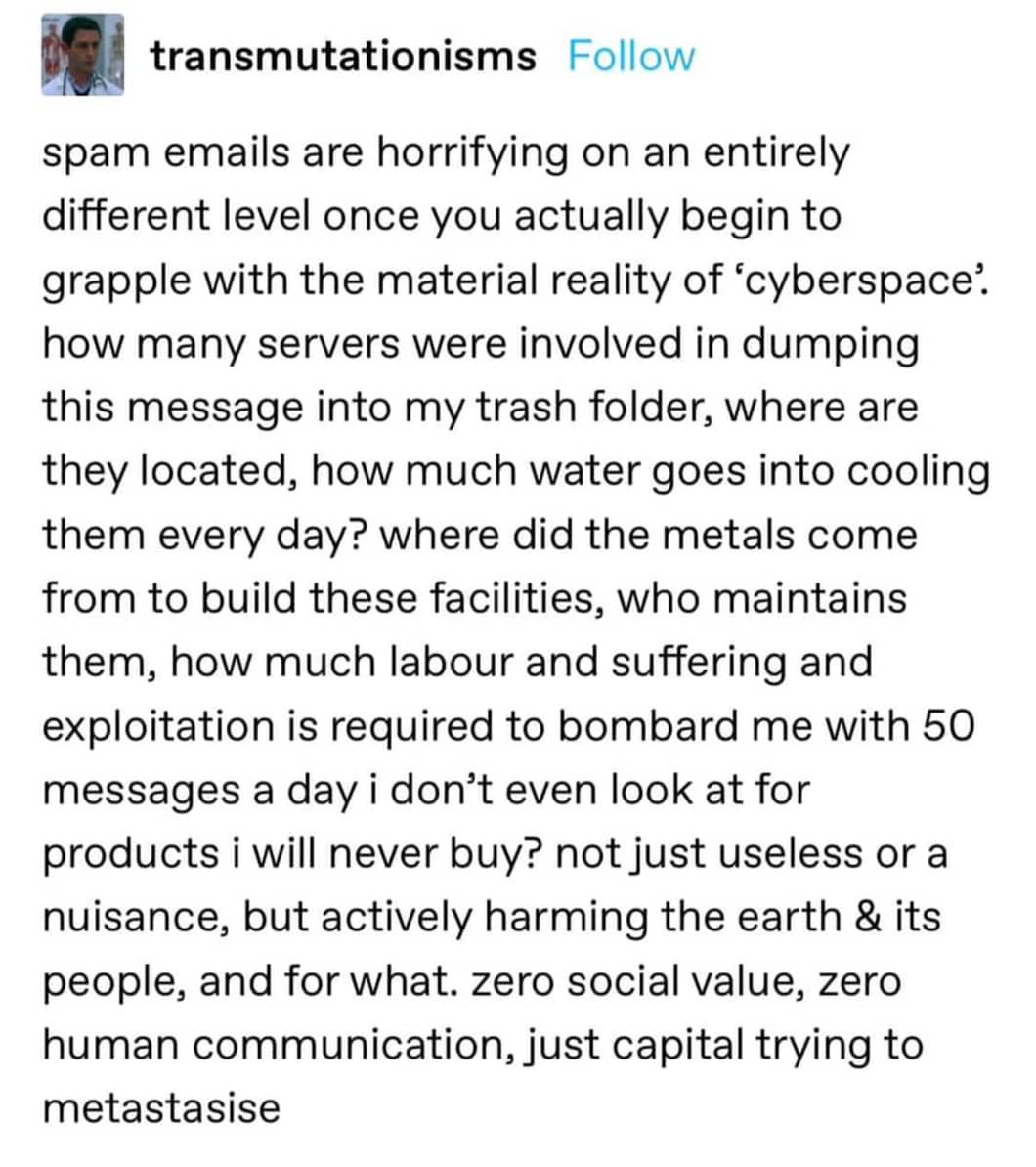this post was submitted on 29 Sep 2023
594 points (97.4% liked)
Microblog Memes
8148 readers
2894 users here now
A place to share screenshots of Microblog posts, whether from Mastodon, tumblr, ~~Twitter~~ X, KBin, Threads or elsewhere.
Created as an evolution of White People Twitter and other tweet-capture subreddits.
Rules:
- Please put at least one word relevant to the post in the post title.
- Be nice.
- No advertising, brand promotion or guerilla marketing.
- Posters are encouraged to link to the toot or tweet etc in the description of posts.
Related communities:
founded 2 years ago
MODERATORS
you are viewing a single comment's thread
view the rest of the comments
view the rest of the comments

https://www.techbusinessnews.com.au/does-email-spam-affect-the-enviroment/
Exactly. It’s not a matter of the metal housing this stuff, it’s the sheer volume of traffic and cost that all the noise makes.
Been thinking about this for years. Used to sell data centers. Every watt of power requires another 2 watts to cool down. Legit phishing, spam, junk, has a cost.
4g of CO2 per email? I find that hard to believe. Probably overestimating emissions like some media did with Netflix.
https://www.iea.org/commentaries/the-carbon-footprint-of-streaming-video-fact-checking-the-headlines
That is a lot of waste, I certainly underestimated. Another commenter has some insight. Sounds like email spam is less of an issue today simply because it's moved to other platforms.